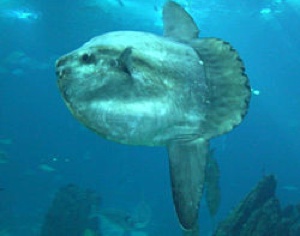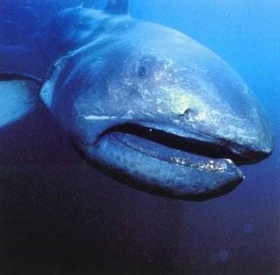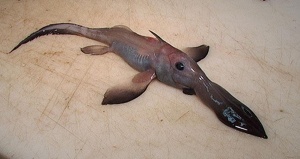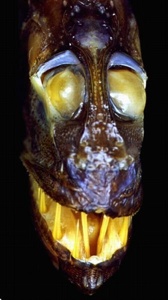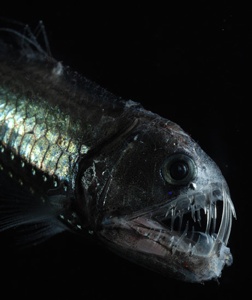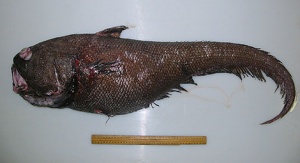- Ocean Sunfish
The ocean sunfish (Mola mola) is the heaviest bony fish in the world, with an average weight of 1000 kilograms. The species is native to tropical and temperate waters around the globe.
- Megamouth Shark
This shark is an extremely rare and unusual species of deep water shark. Discovered in 1976, only a few have ever been seen, with 39 specimens known to have been caught or sighted as of 2007 and three recordings on film. Like the basking shark and whale shark, it is a filter feeder, and swims with its enormous mouth wide open, filtering water for plankton and jellyfish. 13. Chimaera
This strange cartilaginous fish uses its long snout to scan over the sea floor for the electrical impulses of its prey that bury in the muddy sea floor, just like a metal detector. 12. Fangtooth
This fish, also called an ogrefish, while understandably named for their disproportionately large, fang-like teeth and unapproachable visage, are actually quite small and harmless to humans: the larger of the two species, the common fangtooth, reaches a maximum length of just 16 centimetres (6 inches); the shortthorn fangooth is about half this size. 11. Pelican Eel
The pelican eel’s most notable feature is its enormous mouth, much larger than its body. The mouth is loosely-hinged, and can be opened wide enough to swallow a fish much larger than itself. The pouch-like lower jaw resembles that of a pelican, hence its name. 10. Blue-Ringed Octopus
The blue-ringed octopus is the size of a golf ball, but its venom is powerful enough to kill humans. There is no known antidote. 9. Viperfish
With a fearsome grin fit for a movie monster, the viperfish is a real-life predator that lurks in one of the world’s most remote locations. 8. Grenadiers
This large species has a rounded head and a mouth which faces forward to catch squid and fish that swim up off the sea floor. As in most other rattails, the males of this species have a special drum machine on their swim bladder that is used to attract females.
Vampire Squid The Vampire Squid is covered entirely in light-producing organs called photophores. The animal has great control over the organs, capable of producing disorienting flashes of light for fractions of a second to several minutes in duration.
Glass Squid
With its polka-dot mantle and wide-eyed expression, this glass creature represents a lighter side of the inky ocean deep. 5. Giant Squid
The elusive giant squid, known to science as Architeuthis dux, is one of the world’s largest animals, reaching a length of up to 60 feet. It is the largest known invertebrate in the world.
- Giant Isopod
These creatures are thought to be abundant in cold, deep waters of the Atlantic and Pacific Ocean. 3. Football Fish
The species holds pride of place as the first deep-sea angler ever found. The original specimen washed ashore in Greenland in 1833; at 22 inches long, it is still the largest one on record. Since no females of this species have ever been found bearing parasitic males, biologists assume they are fertilized by free-swimming mates.
- Pacific Blackdragon
Female blackdragons are about two feet (61 cm) long and have fanglike teeth and a long chin whisker. The males are small, about three inches (8 cm) in length, and brownish in color. They have no teeth, no chin barbel and no stomach. Unable to eat, the male lives only long enough to mate.
- Amphipod
The unusual animal, called Phronima, an Amphipod, is one of the many strange species recently found on an expedition to a deep-sea mountain range in the North Atlantic. Read More: Twitter Facebook YouTube Instagram
